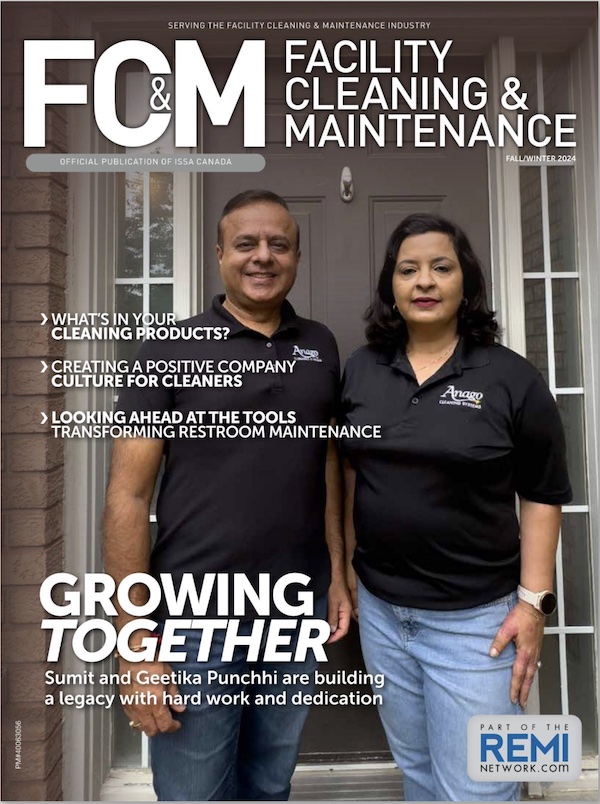Healthcare facilities are particularly vulnerable to healthcare-associated infections (HAIs), and biofilms that form in drains and sinks are an often-underestimated threat. In a Master Class webinar presented by The Infection Prevention Strategy (TIPS), experts Dan Mueller and John Lell shed light on the growing threat of biofilms in healthcare and discuss innovative solutions to deal with this problem.
Understanding biofilms and their impact
Biofilms are micro-organism communities that bind to surfaces and protect themselves through a “sticky matrix,” which renders them extremely resistant to conventional cleaning methods and disinfectants. This resistance to chemicals and to immune system attacks allows them to survive and thrive in hostile environments, such as hospital drains.
Biofilms can harbour dreaded pathogens like Pseudomonas and Candida auris, making infections much harder to treat. Once a pathogen becomes embedded in a biofilm, its resistance to antibiotics can increase exponentially, some as much as 1,000-fold. For instance, Staphylococcus epidermidis, which is normally susceptible to vancomycin, becomes antibiotic-resistant when protected by a biofilm.
Biofilms in hospital drains: a hidden danger
Hospital sink drains, which are often located in high-traffic areas, provide an ideal breeding ground for biofilms. These reservoirs of bacteria and other micro-organisms provide prime conditions for their proliferation, given the constant humidity and available nutrients from organic waste. A study by the American Society for Microbiology documented the ability of biofilms to form and grow in pipes, facilitating the transport of pathogenic bacteria through hospital plumbing systems.
Bacteria in these biofilms can travel up the pipes at a rate of 2.5 cm per day, progressively contaminating sinks and surrounding surfaces. This migration introduces pathogens into sensitive clinical areas, significantly increasing the risk of transmitting HAIs. Indeed, an article published by Infection Control & Hospital Epidemiology revealed that surface contamination around sinks by pathogens such as Pseudomonas aeruginosa and Acinetobacter baumannii is frequent and directly contributes to the spread of infections.
In addition to their ability to move through pipes, biofilms are extremely resistant to conventional disinfectants. The protective matrix in which microorganisms breed shields them from cleaning chemicals commonly used in healthcare facilities. This increased resistance poses a significant challenge for healthcare professionals fighting HAIs. Studies have shown that bacteria like Klebsiella pneumoniae and Staphylococcus aureus are often found in these biofilms and can survive multiple disinfection cycles.
Consequently, the persistent presence of biofilms in hospital drains calls for specific interventions to eliminate them. Innovative solutions, such as enzyme-based cleaners or high-pressure steam disinfection technologies are emerging to identify, treat, and eliminate biofilms in any healthcare facility, where they pose a constant threat to patient health.
Breaking new ground in biofilm control
Because the exopolysaccharide matrix (EPS) protecting these microorganisms makes them particularly difficult to remove, controlling biofilms requires much more sophisticated methods than simple conventional cleaning.
Among innovative solutions, the use of chemical agents that can penetrate the protective matrix of biofilms, such as enzymes and targeted-action disinfectants, has shown promising results. These agents break the polysaccharide bonds of the matrix, facilitating access to hidden bacteria for effective eradication. A study published by the American Society for Microbiology highlights how these products can significantly reduce the resistance of biofilms to antimicrobials by disrupting the protective structure of the biofilm.
Other solutions involve mechanical methods, such as ultrasonic debriding technologies or high-pressure water jets, which help to physically detach biofilms from contaminated surfaces. Additionally, the integration of monitoring sensors into hospital infrastructures enables biofilm formation to be detected and Environmental Service (EVS) workers to be alerted at an early stage to prevent their proliferation. Innovations like these are crucial to containing the spread of resistant pathogens in hospitals.
The threat of biofilms in hospitals is real and growing. A proactive multidisciplinary approach, combining chemistry, mechanics, and intelligent monitoring, represents the future of biofilm management, reducing HAIs and improving the safety of hospitals and healthcare facilities.
Nathalie Thibault is a certified microbiologist with a master’s degree in immunology, Nathalie specializes in infection prevention. She is also the Training Director at ValkarTech, recognized for the quality of her training courses on proper and safe housekeeping practices.
References:
- American Society for Microbiology. The Role of Bacterial Biofilms in Antimicrobial Resistance. March 2021. Available at: https://asm.org/Articles/2021/March/The-Role-of-Bacterial-Biofilms-in-Antimicrobial-Resistance
- Cambridge Core. Outbreak of Multidrug-Resistant Pseudomonas aeruginosa Colonization and Infection Secondary to Imperfect Intensive Care Unit Room Design. Infection Control & Hospital Epidemiology. Available at: https://www.cambridge.org/core/journals/infection-control-and-hospital-epidemiology/article/outbreak-of-multidrugresistant-pseudomonas-aeruginosa-colonization-and-infection-secondary-to-imperfect-intensive-care-unit-room-design/40FE235C1B26E7B248209D4598D22BD5
- MDPI. Microbial Biofilm: A Review on Formation, Infection, Antibiotic Resistance, Control Measures, and Innovative Treatment. Microorganisms. June 2023. Available at: https://www.mdpi.com/2076-2607/11/6/1614
- Cambridge Core. Why Do Susceptible Bacteria Become Resistant to Infection Control Measures? A Pseudomonas Biofilm Example. Infection Control & Hospital Epidemiology. Available at: https://www.cambridge.org/core/journals/infection-control-and-hospital-epidemiology/article/why-do-susceptible-bacteria-become-resistant-to-infection-control-measures-a-pseudomonas-biofilm-example/12492724









